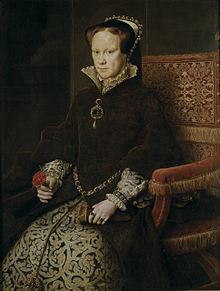
Jeg har nettopp lest ferdig Eamon Duffys bok «The Voices of Morebath», som han skrev en del år etter sin enda mer berømte «The Stripping of the Altars» (som jeg også har kjøpt og skal lese snart). I denne nyere boka skriver Duffy om hvordan en landsby i sør-vest England opplevde reformasjonsårene. På amazon.co.uk kan vi lese følgende om boka:
In this text a Reformation historian takes us inside the mind and heart of Morebath, a remote and tiny sheep-farming village where 33 families worked the difficult land on the southern edge of Exmoor. The bulk of Morebath’s conventional archives have long since vanished. But from 1520 to 1574, through nearly all the drama of the English Reformation, Morebath’s only priest, Sir Christopher Trychay, kept the parish accounts on behalf of the churchwardens. Opinionated, eccentric and talkative, Sir Christopher filled these vivid scripts for parish meetings with the names and doings of his parishioners. Through his eyes we catch a rare glimpse of the life and pre-reformation piety of a 16th-century English village. The work also offers a window into a rural world in crisis as the Reformation progressed. Sir Christopher Trychay’s accounts provide direct evidence of the motives which drove hitherto law-abiding West-Country communities to participate in the doomed Prayer-Book Rebellion of 1549 – culminating in the siege of Exeter which ended in bloody defeat and a wave of executions. Its church bells confiscated and silenced, Morebath shared in the punishment imposed on all the towns and villages of Devon and Cornwall. Sir Christopher documents the changes in the community: reluctantly Protestant, no longer focused on the religious life of the parish church, and increasingly preoccupied with the secular demands of the Elizabethan state, the equipping of armies, and the payment of taxes.
Reformasjonen skjedde i flere omganger i England, fra midten av 1530-tallet under kong Henry VIII (som ble mindre streng i sin reformasjonsiver etter hvert), reformasjonen ble mer intens under hans mindreårige sønn, kong Edward, så hadde man 5 1/2 katolske år under dronning Mary, fra 1553, før den protestantiske tro festet grepet fullstendig i løpet av de mange årene dronning Elisabeth styrte landet. Eamon Duffy skriver hvordan dette påvirket den lille landsbyen Moreabeth, og skriver slik (på s 118) om det som skjedde da kong Edward overtok styret i 1547:
The Injunctions of 1547 looked like a somewhat expanded reissue of those of 1538: in reality they were a charter for revolution. They did incorporate the 1538 material, but in their new form all the qualifications and ambiguities that might give shelter to traditionalist religious practices were systematically edited out. Whereas in 1538 the recitation of the rosary was condemned if done superstitiously or without understanding, `saying over a number of beads not understood or minded upon’, now `praying upon beads’, the most basic form of lay Catholic piety, represented by the beads at the girdle of every matron in Morebath, was rejected absolutely, along with all `suchlike superstition’.
All processions were now forbidden, rendering redundant at a stroke the banners and streamers which Morebath had been investing in since the 1538 Injunctions had halted their spending on images. The new Injunctions ordered the destruction not only of all abused statues and shrines, but even of such images in stained glass windows, an advance towards an absolute ban on imagery almost without parallel in protestant Europe. The 1538 Injunctions had permitted lights before the Rood and the Sepulchre, … but for convinced Protestants, lights about the Sepulchre or the Crucifix were if anything grosser manifestations of idolatry than lights before the lesser images of saints. The 1547 Injunctions now banned all lights or candles anywhere in the church except the two on the high altar. …
Ardent Protestants now had the mandate they needed for an all-out onslaught on the forms of traditional religion. In London, evangelicals began a wholesale purge of all the images in the city churches and in St Paul’s. Initially the Council, worried about the dangers of unrest in the city, tried to halt such action, but in November the Commissioners accepted these radical initiatives, and supervised the removal of all the images in St Paul’s, including the great crucifix. In February 1548 Somerset and the Privy Council extended the total ban on all images to the country at large, on the tongue-in-cheek pretext that this would calm `strife and contention’ in the parishes. ….


 Eamon Duffy beskriver (på s 152) i sin bok «The Voices of Morebath» hva som skjedde da den katolske Mary ble dronning i England i juli 1553:
Eamon Duffy beskriver (på s 152) i sin bok «The Voices of Morebath» hva som skjedde da den katolske Mary ble dronning i England i juli 1553: